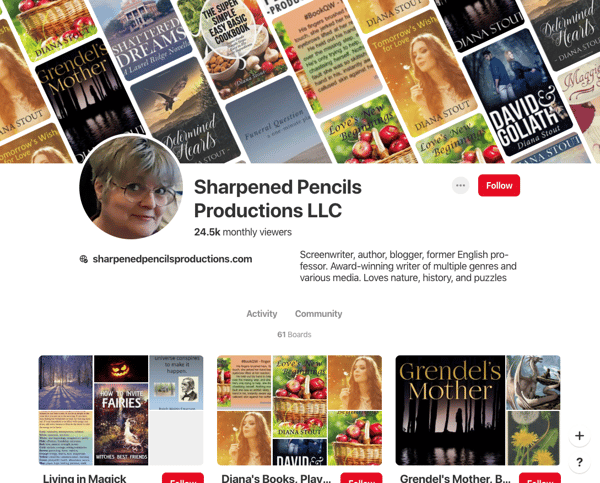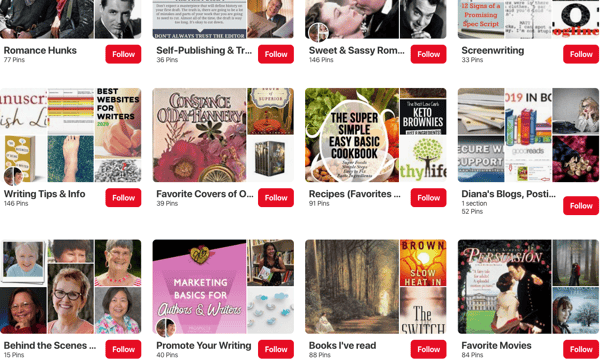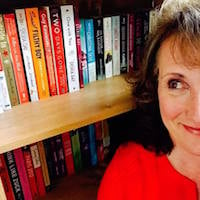With the growth of other visual social media sites like Instagram, it seems like the buzz for Pinterest has died down, but nothing could be further from the truth. Pinterest continues to grow. In 2019 Pinterest became a publicly traded company and in Q2 of 2019, it reported higher than expected earnings, 62% higher in fact than the previous year.
Still not convinced you should spend any time on Pinterest?
Let’s have a look at the average user demographic. According to Pinterest:
- 2/3 of all active users are female.
- 43% of people online (in the US) are on Pinterest.
Now here is where it gets really interesting:
- 8 out of 10 (US) moms are on Pinterest. And we know that women are often primary book buyers.
Got a book directed at the millennial market? Pinterest has you covered there, too:
- More than half of US millennials are on Pinterest.
- 68% of "pinners" have discovered a new product on Pinterest.
Why does this matter? Because new means it could be your book.
Convinced? Great! Now let’s look at where you start.
Setting up Your Pinterest Author Page
If you’ve already set up your page, stay with me, because there are some tips here you may have neglected to include like your bio and website URL – all of which are important. But as with any social media real estate, make sure your bio matters and keep it short and to the point.
Once you’ve established your profile page, go to settings to connect the account with any other social media sites you have such as Instagram, and YouTube. Also, make sure you validate your website URL (Pinterest calls it “claim your URL”) so folks can pin stuff from your website, which is pretty important if you’re using images in your blog posts.
The Secret Formula for Great Pinterest Boards
First, let’s talk about board creation.
There isn’t a magic number of boards you should have to get better visibility on Pinterest, but I’d recommend starting your page with five boards.
For nonfiction authors, the idea for these boards might seem pretty easy to come up with. Fiction authors always find this harder, so regardless of your genre, let me give you some board ideas to get you started (or to add to boards you may already have):
- About your book: this board can focus on your book, specifically, so the cover, and maybe other covers that didn’t quite make the cut. Maybe you include an unboxing picture (a picture of you opening up your first box of books!). You could do pictures from book events, speaking events, you get the idea.
- Tips from your book: for nonfiction authors, this is pretty simple and an easy add. This is also a great place to pin blog posts that are directly related to your book.
- Book Creation: Readers are always interested in this—what your process is for creating the book. Maybe pictures of your workspace, pictures of your manuscript through the editing process, research you did, etc.
- Settings/Costumes/Historical Stuff: I’m going to pull all of these ideas into one line item, though they can each be separate boards. I’ve especially seen historical fiction authors have some real fun with this. Even if you haven’t written anything historical, you can always fill the settings board with images of the town or city the story takes place in—even if the town is imaginary (as many are), use your creativity.
- Fun/Inspirational Quotes/Other Books/Favorite Things: This is where the boards can get more personal, meaning you’re sharing a bit about yourself. One thing we know is that users on Pinterest love quotes, so I’d for sure have a quotes board. But you could also do book recommendations, some of your favorite things—let your personality shine!
The idea behind creating boards is you want to invite readers into your world, and by doing so, you let the reader get to know you better. We buy stuff from people we like, so make the boards and the pins a true reflection of yourself and your work.
Optimizing Your Pinterest Boards
One thing I love doing is using keywords in my board names and my pins. I’ll use trending hashtags, too of course—but trending hashtags may fall off the reader’s radar screen, whereas keywords have a longer shelf life. So, using keyword-specific boards and pins is a great way to come up in search, too.
It goes without saying that the biggest element on Pinterest is the visual nature of the site, so up your image game when it comes to creating images that users will love and want to share.
You can get fairly inexpensive images at sites like Adobe Stock Images and Canva—you can also use Canva to create some beautiful branded images, too. Every single image you post should be branded to you or your book—at the very least it should have your website address so as the image is getting repinned, all roads lead back to you!
Now let’s talk about the number of pins per board. While each board will vary in terms of content, it’s been my experience that boards with 10-12 pins do better than boards that have only a few images, so keep that in mind as you’re setting up boards.
How to Create a Pinterest Presence that Converts Users into Readers!
As with anything you do in book marketing, it’s important to understand what your reader wants. And by that, I mean what they *really* want. What drives reader engagement? What are your readers looking for—and what are they searching for?
Understanding this is the first step to crafting a Pinterest page readers will love and gravitate towards.
So where do you start?
Well, do your research and learn from the experts. Identify other authors in your genre, follow them on Pinterest, and get a sense of what they’re doing. Each author (even across the same genre) will have a different page, but you’ll get a general sense of what might work with your readers. I’m not suggesting you copy anyone here, but rather learn from great examples and go to enough pages to get the creative juices flowing. Then, when you’re ready, experiment with your own page and see what’s pulling in readership.
You can also gauge this by the number of repins and shares to any particular image/post you have up, too. Once your boards are up and populated with images, you’ll quickly be able to see what’s working and what isn’t.
How Often Should You Pin?
The good thing about Pinterest is that it doesn’t require as much care and feeding as, let’s say, Facebook. Though I suggest getting on there a few times a week to put up new content—more if you are getting ready to release a book, or during book launch week.
Does Any of This Sell Books?
That’s always the million-dollar question, isn’t it? The short answer is yes, it does. Building community with your reader and drawing them into your knowledge base or your story is a great way to build a relationship with your reader. And people buy from people they like.
Pinterest (like any social media site) is one piece of the pie, it’s one way to drive more interest to your message by using colorful, great (branded) images and content that’s of interest to your audience.
The reality is that no one particular thing sells books—there isn’t one single magic bullet that drives book sales, it’s a carefully woven tapestry of all the things your readers will engage with—and that will drive more readers to you and more sales to your book. Because we know that exposure (the right kind) does sell books—and Pinterest is a great way to build not only exposure but great reader relationships as well!














